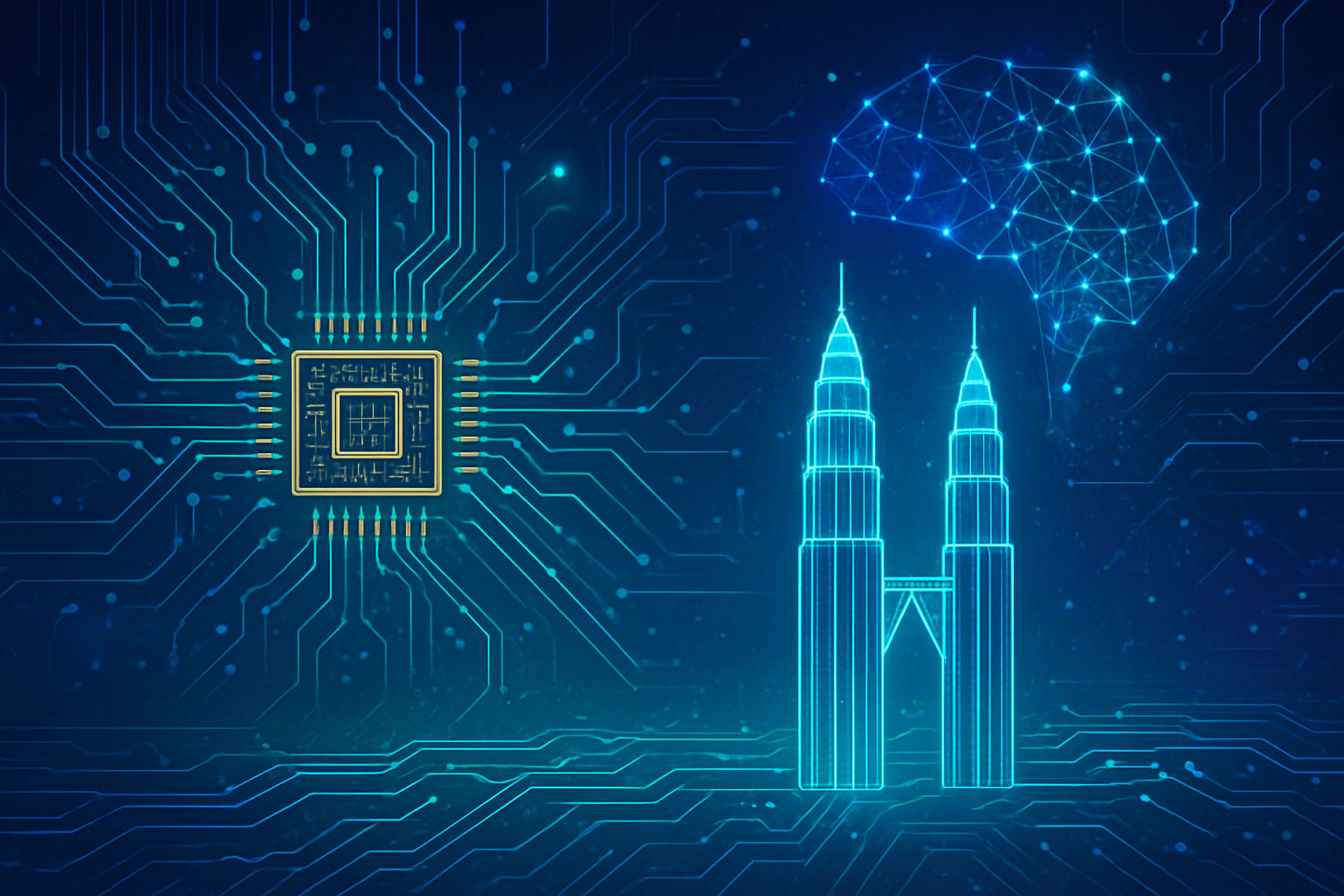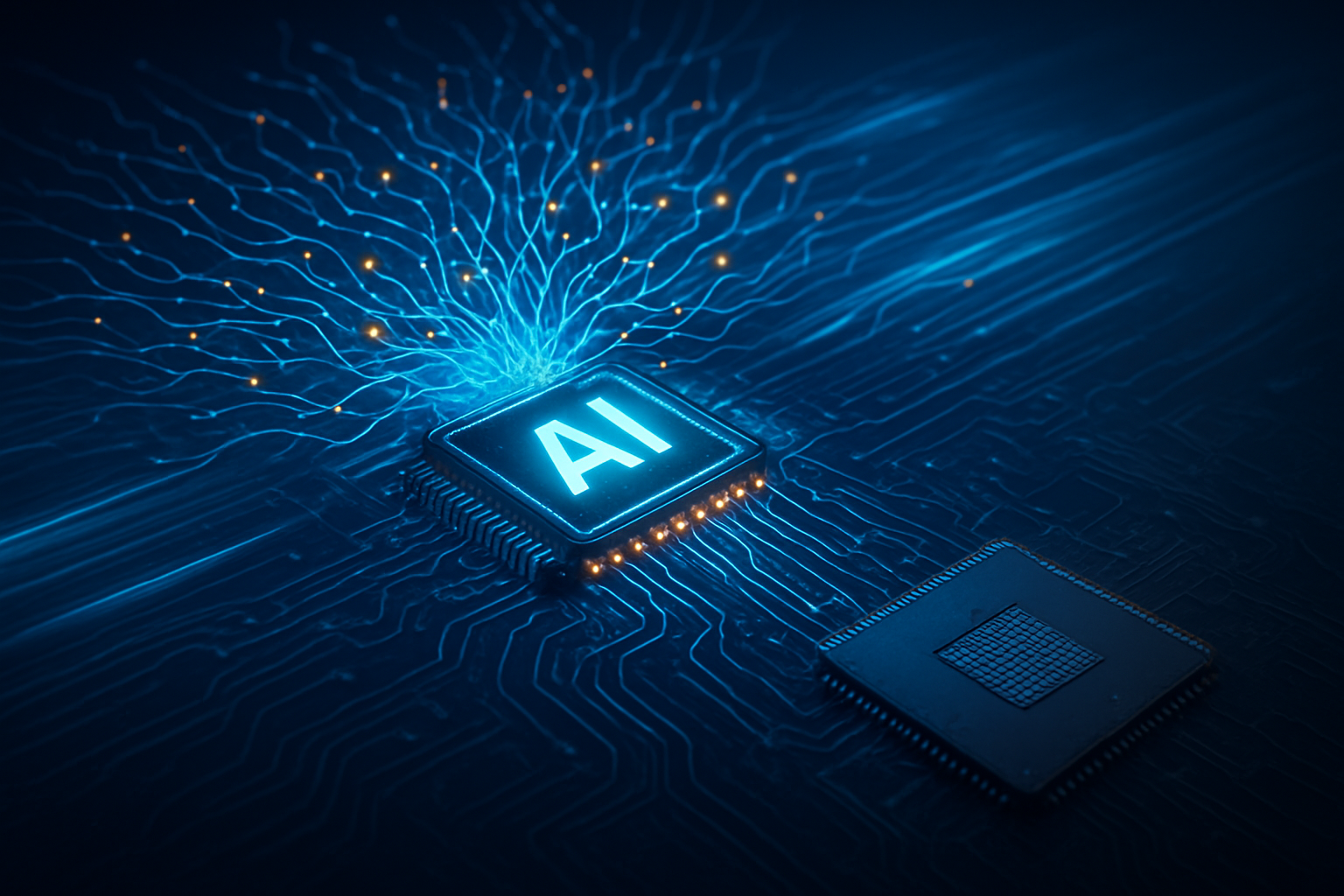The relentless march of artificial intelligence (AI) continues to reshape industries, with the semiconductor sector acting as its indispensable backbone. In this high-stakes environment, a particular class of investment vehicle, the leveraged Exchange-Traded Fund (ETF), has gained significant traction, offering investors amplified exposure to this critical industry. Among these, the ProShares Ultra Semiconductors ETF (NYSEARCA: USD) stands out, promising double the daily returns of its underlying index, a tempting proposition for those bullish on the future of silicon and, particularly, on giants like NVIDIA (NASDAQ: NVDA). However, as with any instrument designed for magnified gains, the USD ETF carries inherent risks that demand careful consideration from investors navigating the volatile waters of the semiconductor market.
The USD ETF is engineered to deliver daily investment results that correspond to two times (2x) the daily performance of the Dow Jones U.S. SemiconductorsSM Index. This objective makes it particularly appealing to investors seeking to capitalize on the rapid growth and innovation within the semiconductor space, especially given NVIDIA's substantial role in powering the AI revolution. With NVIDIA often constituting a significant portion of the ETF's underlying holdings, the fund offers a concentrated, amplified bet on the company's trajectory and the broader sector's fortunes. This amplified exposure, while alluring, transforms market movements into a double-edged sword, magnifying both potential profits and profound losses.
The Intricacies of Leverage: Daily Resets and Volatility's Bite
Understanding the mechanics of leveraged ETFs like ProShares Ultra Semiconductors (USD) is paramount for any investor considering their use. Unlike traditional ETFs that aim for a 1:1 correlation with their underlying index over time, leveraged ETFs strive to achieve a multiple (e.g., 2x or 3x) of the daily performance of their benchmark. The USD ETF achieves its 2x daily target by employing a sophisticated array of financial derivatives, primarily swap agreements and futures contracts, rather than simply holding the underlying securities.
The critical mechanism at play is daily rebalancing. At the close of each trading day, the fund's portfolio is adjusted to ensure its exposure aligns with its stated leverage ratio for the next day. For instance, if the Dow Jones U.S. SemiconductorsSM Index rises by 1% on a given day, USD aims to increase by 2%. To maintain this 2x leverage for the subsequent day, the fund must increase its exposure. Conversely, if the index declines, the ETF's value drops, and it must reduce its exposure. This daily reset ensures that investors receive the stated multiple of the daily return, regardless of their purchase time within that day.
However, this daily rebalancing introduces a significant caveat: volatility decay, also known as compounding decay or beta slippage. This phenomenon describes the tendency of leveraged ETFs to erode in value over time, especially in volatile or sideways markets, even if the underlying index shows no net change or trends upward over an extended period. The mathematical effect of compounding daily returns means that frequent fluctuations in the underlying index will disproportionately penalize the leveraged ETF. While compounding can amplify gains during strong, consistent uptrends, it works against investors in choppy markets, making these funds generally unsuitable for long-term buy-and-hold strategies. Financial experts consistently warn that leveraged ETFs are designed for sophisticated investors or active traders capable of monitoring and managing positions on a short-term, often intraday, basis.
Market Ripple: How Leveraged ETFs Shape the Semiconductor Landscape
The existence and increasing popularity of leveraged ETFs like the ProShares Ultra Semiconductors (USD) have tangible, if indirect, effects on major semiconductor companies, particularly industry titans such as NVIDIA (NASDAQ: NVDA), and the broader AI ecosystem. These ETFs act as accelerants in the market, intensifying both gains and losses for their underlying holdings and influencing investor behavior.
For companies like NVIDIA, a significant component of the Dow Jones U.S. SemiconductorsSM Index and, consequently, a major holding in USD, the presence of these leveraged instruments reinforces their market positioning. They introduce increased liquidity and speculation into the market for semiconductor stocks. During bullish periods, this can lead to amplified demand and upward price movements for NVIDIA, as funds are compelled to buy more underlying assets to maintain their leverage. Conversely, during market downturns, the leveraged exposure amplifies losses, potentially exacerbating downward price pressure. This heightened activity translates into amplified market attention for NVIDIA, a company already at the forefront of the AI revolution.
From a competitive standpoint, the amplified capital flows into the semiconductor sector, partly driven by the "AI Supercycle" and the investment opportunities presented by these ETFs, can encourage semiconductor companies to accelerate innovation in chip design and manufacturing. This rapid advancement benefits AI labs and tech giants by providing access to more powerful and efficient hardware, creating a virtuous cycle of innovation and demand. While leveraged ETFs don't directly disrupt core products, the indirect effect of increased capital and heightened valuations can provide semiconductor companies with greater access to funding for R&D, acquisitions, and expansion, thereby bolstering their strategic advantage. However, the influence on company valuations is primarily short-term, contributing to significant daily price swings and increased volatility for component stocks, rather than altering fundamental long-term value propositions.
A Broader Lens: Leveraged ETFs in the AI Supercycle and Beyond
The current investor interest in leveraged ETFs, particularly those focused on the semiconductor and AI sectors, must be viewed within the broader context of the AI landscape and prevailing technological trends. These instruments are not merely investment tools; they are a barometer of market sentiment, reflecting the intense speculation and ambition surrounding the AI revolution.
The impacts on market stability are a growing concern. Leveraged and inverse ETFs are increasingly criticized for exacerbating volatility, especially in concentrated sectors like technology and semiconductors. Their daily rebalancing activities, particularly towards market close, can trigger significant price swings, with regulatory bodies like the SEC expressing concerns about potential systemic risks during periods of market turbulence. The surge in AI-focused leveraged ETFs, many of which are single-stock products tied to NVIDIA, highlights a significant shift in investor behavior, with retail investors often driven by the allure of amplified returns and a "fear of missing out" (FOMO), sometimes at the expense of traditional diversification.
Comparing this phenomenon to previous investment bubbles, such as the dot-com era of the late 1990s, reveals both parallels and distinctions. Similarities include sky-high valuations, a strong focus on future potential over immediate profits, and speculative investor behavior. The massive capital expenditure by tech giants on AI infrastructure today echoes the extensive telecom spending during the dot-com bubble. However, a key difference lies in the underlying profitability and tangible infrastructure of today's AI expansion. Leading AI companies are largely profitable and are reinvesting substantial free cash flow into physical assets like data centers and GPUs to meet existing demand, a contrast to many dot-com entities that lacked solid revenue streams. While valuations are elevated, they are generally not as extreme as the peak of the dot-com bubble, and AI is perceived to have broader applicability and easier monetization, suggesting a more nuanced and potentially enduring technological revolution.
The Road Ahead: Navigating the Future of Leveraged AI Investments
The trajectory of leveraged ETFs, especially those tethered to the high-growth semiconductor and AI sectors, is poised for continued dynamism, marked by both innovation and increasing regulatory scrutiny. In the near term, strong performance is anticipated, driven by the sustained, substantial AI spending from hyperscalers and enterprises building out vast data centers. Companies like NVIDIA, Broadcom (NASDAQ: AVGO), and Advanced Micro Devices (NASDAQ: AMD) are expected to remain central to these ETF portfolios, benefiting from their leadership in AI chip innovation. The market will likely continue to see the introduction of specialized leveraged single-stock ETFs, further segmenting exposure to key AI infrastructure firms.
Longer term, the global AI semiconductor market is projected to enter an "AI supercycle," characterized by an insatiable demand for computational power that will fuel continuous innovation in chip design and manufacturing. Experts predict AI chip revenues could quadruple over the next few years, maintaining a robust compound annual growth rate through 2028. This sustained growth underpins the relevance of investment vehicles offering exposure to this foundational technology.
However, this growth will be accompanied by challenges and increased oversight. Financial authorities, particularly the U.S. Securities and Exchange Commission (SEC), are maintaining a cautious approach. While regulations approved in 2020 allow for up to 200% leverage without prior approval, the SEC has recently expressed uncertainty regarding even higher leverage proposals, signaling potential re-evaluation of limits. Regulators consistently emphasize that leveraged ETFs are short-term trading tools, generally unsuitable for retail investors for intermediate or long-term holding due to volatility decay. Challenges for investors include the inherent volatility, the short-term horizon, and the concentration risk of single-stock leveraged products. For the market, concerns about opaque AI spending by hyperscalers, potential supply chain bottlenecks in advanced packaging, and elevated valuations in the tech sector will require close monitoring. Financial experts predict continued investor appetite for these products, driving their evolution and impact on market dynamics, while simultaneously warning of the amplified risks involved.
A High-Stakes Bet on Silicon's Ascent: A Comprehensive Wrap-up
Leveraged semiconductor ETFs, exemplified by the ProShares Ultra Semiconductors ETF (USD), represent a high-octane avenue for investors to participate in the explosive growth of the AI and semiconductor sectors. Their core appeal lies in the promise of magnified daily returns, a tantalizing prospect for those seeking to amplify gains from the "AI Supercycle" and the foundational role of companies like NVIDIA. However, this allure is inextricably linked to significant, often misunderstood, risks.
The critical takeaway is that these are sophisticated, short-term trading instruments, not long-term investments. Their daily rebalancing mechanism, while necessary to achieve amplified daily targets, simultaneously exposes them to the insidious effect of volatility decay. This means that over periods longer than a single day, particularly in choppy or sideways markets, these ETFs can erode in value, even if the underlying index shows resilience. The magnified gains come with equally magnified losses, making them exceptionally risky for all but the most experienced and actively managed portfolios.
In the annals of AI history, the prominence of leveraged semiconductor ETFs signifies the financial market's fervent embrace of this transformative technology. They serve as a testament to the immense capital being channeled into the "picks and shovels" of the AI revolution, accelerating innovation and capacity expansion within the semiconductor industry. However, their speculative nature also underscores the potential for exaggerated boom-and-bust cycles if not approached with extreme prudence.
In the coming weeks and months, investors and market observers must vigilantly watch several critical elements. Key semiconductor companies' earnings reports and forward guidance will be paramount in sustaining momentum. The actual pace of AI adoption and, crucially, its profitability for tech giants, will influence long-term sentiment. Geopolitical tensions, particularly U.S.-China trade relations, remain a potent source of volatility. Macroeconomic factors, technological breakthroughs, and intensifying global competition will also shape the landscape. Finally, monitoring the inflows and outflows in leveraged semiconductor ETFs themselves will provide a real-time pulse on speculative sentiment and short-term market expectations, reminding all that while the allure of amplified ambition is strong, the path of leveraged investing is fraught with peril.
This content is intended for informational purposes only and represents analysis of current AI developments.
TokenRing AI delivers enterprise-grade solutions for multi-agent AI workflow orchestration, AI-powered development tools, and seamless remote collaboration platforms.
For more information, visit https://www.tokenring.ai/.









